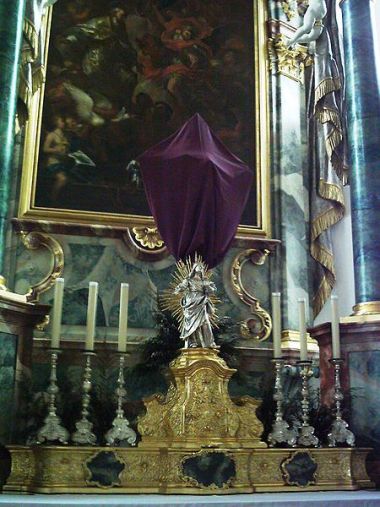Not Just Smells And Bells: 10 Reasons To Try A 'High' Church This Season

Fancy something different this Lent and Holy Week? Feel like some focus on liturgy, and a sense of timelessness while others seek to get down with the kids with drums and guitars? Want to experience the scent of incense, and the starkly different feel that can be created in a church before and after Easter?
Then you could do worse than try a 'high' or 'Anglo-Catholic' church, of which there are a number dotted around the country. There is plenty going on in such places and they come into their own during this season.
Here are ten reasons to visit a high church during this period.
1. A proper Ash Wednesday service
Get your forehead 'ashed' with the sign of the cross made from the ash of palm crosses from the previous year. Then either wash it off so as not to be showy, or go forth proudly to proclaim the faith in the streets.
2. Stations of the Cross
Most high churches will host Evensong services, which themselves can be beautiful, based as they are on traditional Gregorian chanting of the psalms. But in Lent these can be replaced with 'Stations,' when the congregation tours round the church singing hymns, praying and reflecting on the last walk of Jesus.
3. Passion Sunday

In the fifth week of Lent, crosses, images and any statues will be veiled, traditionally in violet, the colour of vestments in Lent. This helps create a sombre atmosphere.
4. Palm Sunday
On this day at the start of Holy Week, not only are palms blessed and distributed individually but a procession takes place throughout the palm-decorated church and often outside, too, so onlookers can see that something is going on. The procession marks the moment of Jesus's triumphant entrance into Jerusalem, and is the first hint of the glory to come at the end of this otherwise dark week.
5. Low Mass
For those keen to squeeze in as much church as possible in Holy Week, on the Monday, Tuesday and Wednesday an Anglo-Catholic venue is likely to lay on a quiet, said and relatively quick low Mass. No sermons!
6. Maundy Thursday
A good high church will do Maundy Thursday in style, with a solemn sung Mass of the last supper followed by the symbolic, swift and almost theatrical stripping of the altar. There may then be 'Maundy watch' in which members of the congregation stay up reflecting on Jesus' night of agony in the Garden of Gethsemane.
7. Good Friday
Here, a high church comes into its own, with a solemn liturgy of the day in which the entire Passion story may be sung from the Gospels, while everyone stands. For the truly devotional, this long service may be followed by Stations of the Cross. A proper good Friday is not physically easy.
8. Holy Saturday
A typical Holy Saturday at such a church could start with said matins in the morning followed by a communal church spring clean and then, in the evening after nightfall, a candlelit Vigil Mass (and the lighting of the Easter candle) marking the triumphant start of Easter.
9. Easter Day

That sense of triumph continues into Easter morning when the biggest festival of the Christian year may start with a procession around the church with plenty of incense, which represents the rising up of prayer, distributed by a good Thurifer.
10. Earn a good lunch
You can finally indulge in a good lunch with a clear conscience if you have 'done' Holy Week properly. Remember: have a good Lent, and you have a good Easter!
Three fine examples of 'high' churches in the capital are St. Mary's, Bourne Street, near Sloane Square, All Saints, Margaret Street in central London and St. Peter's, Clapham.











